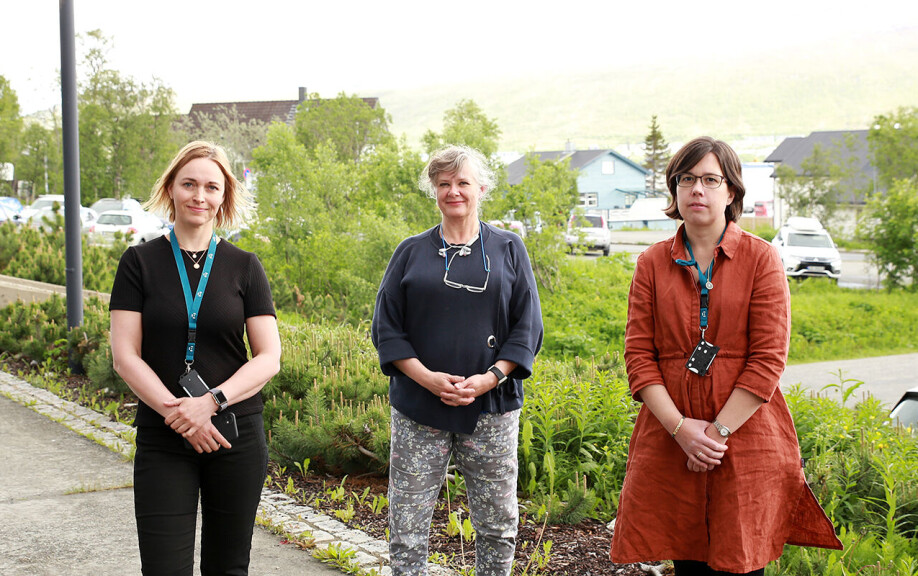THIS ARTICLE/PRESS RELEASE IS PAID FOR AND PRESENTED BY the Norwegian centre for E-health research - read more

WHO report highlights innovation in Norwegian primary health care
The Norwegian Centre for E-health Research has produced a status report for the World Health Organization (WHO) on the use of digital tools in Norwegian primary health care during the Covid-19 pandemic.
Early this year, the WHO European Region set out to collect experiences from several countries, about how the primary health care services had innovated during the Covid-19 pandemic. The resulting 15 country vignettes were recently presented at the WHO Regional Committee for Europe.
Since the Norwegian Centre for E-health Research is an official WHO collaborating centre, they were invited to summarize some examples from Norway. The vignette was finished in August.
“This mapping of primary care needs and digital solutions during the pandemic is useful. The important thing to find out is how video consultations, self-monitoring, sharing of health data and much more, can contribute to better health services,” says senior adviser Lene Lundberg who coordinated the delivery.
She gathered the knowledge together with colleagues Karianne Fredenfeldt Lind and Gro Berntsen. In addition, advisers from WHO contributed to the report.

Innovation on existing platforms
To find examples of good practices in the Norwegian health frontline, they dived into research articles, knowledge environments, statistics, government reports and searched the media and the internet.
Although much of the digital technology was in place before the pandemic, not everything went smoothly, it turns out.
Before the pandemic, the uptake of e-consultations among general practitioners was slow even though telehealth solutions were available. In January 2020, about one third of all GPs offered e-consultations (text, video and telephone), but this comprised only 3.1 percent of all consultations. Soon after the first lockdown, e-consultations experienced a boost, enabled by factors such as technology readiness, competence among health workers and financial incentives. Within the next months, almost all doctors had started to use e-consultations.
“It was interesting to see how health care personnel started using technology new to them in order to continue giving patients the best care,” says senior adviser Karianne F. Lind, one of the authors.
“I also think it is important to pay attention to how the digitalization affects the less digitally experienced, making sure that the health care services don't end up excluding some patients or personnel.”
Energetic initiatives locally and centrally
Progress was made when it comes to data-sharing across health units. The health portal Helsenorge.no was developed rapidly. Digital tools from local innovation actors and the central health authorities were launched. However, there is still a way to go to improve access and sharing of data from, for example, patient registries and disease registries.
Several municipalities tested digital monitoring at home with good results, from 2018–21. Some of the technologies tested have been ear thermometer, blood pressure monitor, pulse oximetry, spirometry, blood sugar analysers and C-reactive protein analysers. Covid-19 patients were added to the list.
Mental health services went digital. Not all mental health problems need long-term treatment, and some offered a free, low-threshold service for people with mild anxiety or depression.
Nursing homes used tablets to facilitate communication and reduce the risk of isolation between residents and relatives when physical visits were not possible.
The way forward
The Norwegian Coronavirus Commission stated in their evaluation that the municipalities were central to the success of the pandemic response.
However, the commission’s report also highlighted areas that needed improvement: a lack of an infection control plan in some municipalities and insufficient local disease surveillance systems. On a positive note, digital solutions were key enablers for patient care and follow-up, and coordination between primary health care and the hospitals was effective. There was a high level of trust between units and levels.
“I especially noticed one thing when I read some of the other WHO country vignettes. Many of them also pointed to multidisciplinary teams in response to how we can go from treatment to also work with prevention, and how we should better see the whole person, not just the diseases,” says one of the other authors from E-health Research, Professor Gro Berntsen.
She adds: “We have talked about and studied the usefulness of multidisciplinary teams for decades. Still, people experience that health services are divided quite rigidly at different levels. So, innovation and development must continue – with the patient’s goals at the centre.”
Reference:
Lene Lundberg et.al.: Norway: Transforming primary health care during the pandemic. Use of eHealth tools in primary health care during the COVID-19 pandemic, 2021.
See more content from the Norwegian centre for E-health research:
-
Technology in the health and care sector: "This is not just about new gadgets"
-
Five Nordic and Baltic countries take a major step toward the future of health research
-
A digital chatbot can help you stay fit
-
Researchers' advice for better healthcare services: Listen to the patient!
-
Half of those who received mental health care found errors in their medical records
-
AI can understand your medical records: A new language model could revolutionise healthcare






































